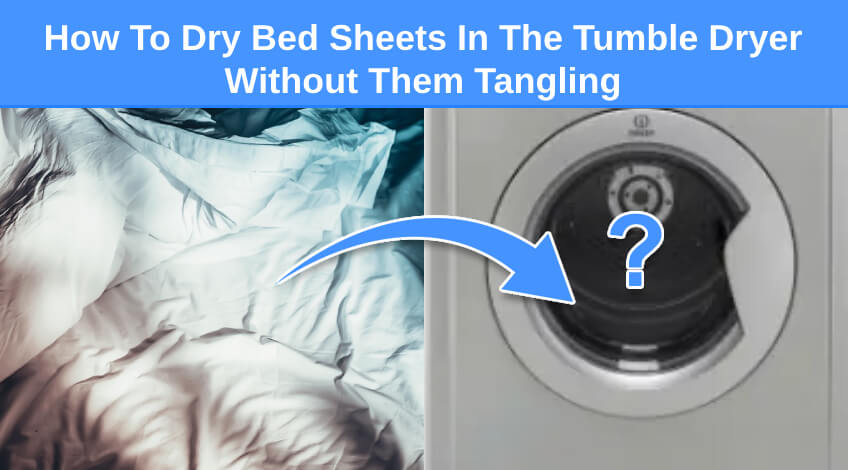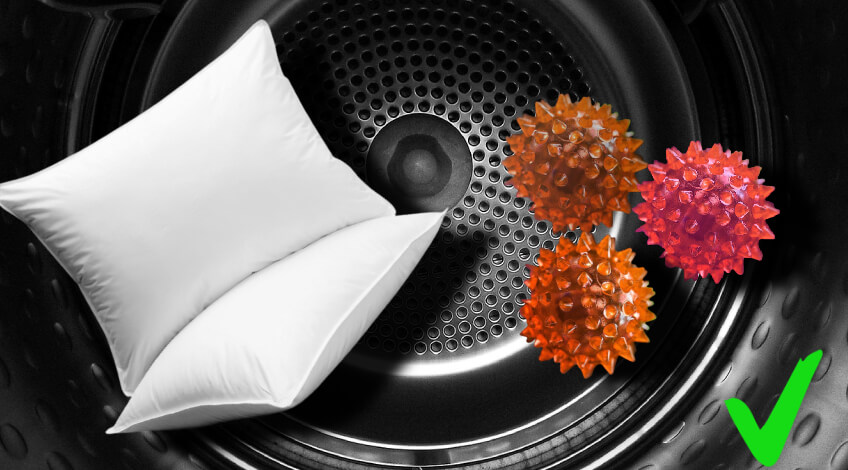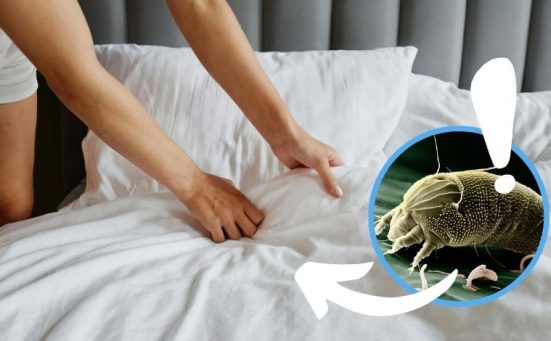
How To Dry Bed Sheets In The Tumble Dryer Without Them Tangling (stop them balling up)
Bed sheets can be a pain to launder. They can be bulky, dusty, and also take a long time to dry.
One frustrating thing that many of us experience is that sheets tend to tangle together in the tumble dryer.
If you’re tired of having to separate your sheets once they’re done in the dryer, read on for some tips!
Tips to stop bed sheets from balling up in your dryer
When they’re all in different lengths and fabrics, it’s normal for bed sheets to ball up when put in the tumble dryer. Sadly, when this happens, it can also affect how even the sheets dry, too.
Is it taking you a lot of time to undo the twisted mess they get after drying? Here are some ways to keep this from happening:
Shake your sheets
Did you know that the way you’re putting your sheets inside the dryer influences whether or not they’ll tangle?
If you don’t believe us, try this: Put your bed sheets in the dryer one by one. Make sure that you give them a little shake to straighten the fabrics and remove any existing twists.
Once you put all the bedding in and start the dryer, you’ll notice that the tangling is significantly reduced.
Separate sheets from other fabrics when drying
Do you dry your bedding together? If you’re putting your duvet, blankets, and sheets in one load, it’s best to dry them separately instead.

The reason why you have to separate your sheets, with, for example, duvets, is that your dryer will have a difficult time getting the moisture away from them. After all, most duvets have thicker material which makes them harder to dry, and will also get twisted with sheets.
Avoid overloading your dryer
Having little space inside the dryer makes your sheets tangle much faster. This is because the fabrics don’t have enough space to move, which then forces the sheets to rub together and ball up.
If you have a lot of sheets to dry and they’ll take more than ¾ of your dryer’s drum, it’ll be better to do two loads instead. This way, the dryer will completely remove the moisture from the sheets and reduce tangling.
SEE ALSO: Tumble Dryer Not Drying Properly? (here’s why & how to fix)
Use dryer balls
Dryer balls! Whether they’re made of wool or rubber, they are handy laundry aids that can even reduce tangling on your sheets!

A dryer ball’s main purpose is to speed up the drying process of your garments. However, they also do many things such as reducing static and wrinkling from happening on your clothes or bedding.
How do they work? When the dryer balls agitate the sheets inside the dryer, they also help separate the fabrics. As a result, you’ll have to deal with less tangled sheets!
NOTE: Don’t have dryer balls yet? Tennis balls can be a great alternative!
- SUPERIOR QUALITY WOOL: 100% New Zealand premium wool with no synthetic fillers, rolled into tight, extra-large balls and felted for a natural, long lasting product
- REUSABLE FABRIC SOFTENER: Replace chemically infused dryer sheets and liquid fabric softeners with a natural alternative that will last more than a thousand dryer loads
Dry your bed sheets in intervals
Another method to drying your sheets while reducing tangles is setting intervals to check and untwist them.
This will mean that you’ll set your dryer to spin for 30 minutes, then check and unravel your sheets. After straightening them out, put them back in the machine for 30 minutes and repeat the process until the sheets are completely dry.
Yes, we know that this can be a tiring process for some people. However, this method is effective in making sure that you won’t be stuck with extremely twisted sheets that are not only difficult to unravel, but may also cause damage in the long run.
NOTE: Remove sheets from the dryer immediately to reduce wrinkling. We get it: we also have some days when it’s just tempting to leave the sheets in the dryer and just deal with it later. Unfortunately, this habit will definitely wrinkle and crease your sheets.
Inspect your tumble dryer!
Finally, when you’ve already done all the tips above and your sheets are still a jumbled mess, the issue may be your dryer.
In some cases, a tumble dryer’s drum may have trouble spinning. Do you hear strange noises or creaking when using your machine? If so, it’s possible that there’s an issue with the drum, dryer belt, or there may be a problem that’s causing your appliance to not work properly.
When this happens, turn off your dryer and check the drum. It’s also possible that there are items inside such as forgotten socks, or small things that are causing the sheets to tangle.
If you don’t know where to look or would prefer a pro to do it, look for a repair engineer that does inspections in your area.
Do you have any questions? Feel free to ask them below!
SEE ALSO: Common Tumble Dryer Faults (and what to do about them)
Frequently Asked Questions
To reduce wrinkling when drying your sheets, it’s best to use the low setting on your tumble dryer. Remove the sheets immediately once the spin is complete, then smoothen any wrinkling using your palms.
Clothes get tangled in the dryer mainly when they’re not properly put in the drum. To prevent this, load each item of clothing one by one in the dryer.
Using dryer balls, such as those made of wool or rubber, helps get rid of static cling in your dryer.
Using the low heat setting on your dryer helps reduce wrinkling and creasing on your bed sheets.
Tumble dryers will not work well when they are under or overfilled. It’s a good rule of thumb to ensure that the garments you’re putting in will fill the dryer drum at least halfway, or ¾ to maximise their efficiency.
Also, follow us on Pinterest ...




